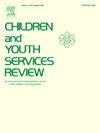Determinants of school drop-out among adolescents in rural Sri Lanka
IF 1.7
2区 社会学
Q1 FAMILY STUDIES
引用次数: 0
Abstract
Introduction
Every child has a mandatory right to education in most countries Including Sri Lanka. The rates of school drop-out remain high in vulnerable populations specially in developing countries.
Methods
This community-based case-control study included 75 teenagers who had dropped out of school for at least one year within the Mahaoya Medical Officer of Health (MOH) division. All teenagers and their parents were interviewed separately at their home premises using a multi-structured questionnaire and a qualitative theme guide to explore contributory predisposing factors. Controls were selected within the same MOH region and matched for age and gender.
Results
Median age of our cohort was 16 years. There was a male preponderance amongst the dropouts (male − 48, 64 %; female teenagers (27, 36 %). Educational achievements were lower amongst parents of children with school drop-out (p < 0.05). Immediate reasons for school dropout were financial constraints (21, 28 %), retention in the same grade due to poor performance (19, 25.3 %), loss or separation of parents (11, 14.6 %) and romantic relationships resulting in living together (10, 13.3 %). Independent risk factors for school drop-out were poor school performance (p < 0.05), retention in the same grade (p < 0.001), low parental expectations on education (p < 0.001), parental ill-literacy (p < 0.05) and school dropout in siblings (p < 0.05). None of these teenagers received psychological support.
Conclusion
Aetiology of school dropout amongst teenagers is multi-factorial and grade retention negatively impacts on students’ willingness to continue schooling. We propose that all children who drop out of school have access to psychological support.
斯里兰卡农村青少年辍学的决定因素
在包括斯里兰卡在内的大多数国家,每个孩子都有受教育的权利。弱势群体的辍学率仍然很高,特别是在发展中国家。方法本以社区为基础的病例对照研究纳入了马豪雅卫生厅(MOH)内辍学至少一年的75名青少年。使用多结构问卷和定性主题指南在家中对所有青少年和父母进行单独访谈,以探索促成易感因素。对照在同一卫生部区域内选择,并根据年龄和性别进行匹配。结果我们队列的中位年龄为16岁。辍学者中有男性优势(男性- 48,64%;女性青少年(27.36%)。辍学儿童的父母的教育成就较低(p <;0.05)。辍学的直接原因是经济拮据(21.28%),由于表现不佳而留在同一年级(19.25.3%),失去父母或与父母分居(11.14.6%)以及恋爱关系导致同居(10.13.3%)。辍学的独立危险因素是学习成绩差(p <;0.05),同级保留率(p <;0.001),父母对教育的期望较低(p <;0.001),父母文化不良(p <;0.05)和兄弟姐妹辍学率(p <;0.05)。这些青少年都没有得到心理支持。结论青少年辍学的原因是多因素的,年级保留对学生继续学业的意愿有负向影响。我们建议所有的辍学儿童都能获得心理支持。
本文章由计算机程序翻译,如有差异,请以英文原文为准。
求助全文
约1分钟内获得全文
求助全文
来源期刊

Children and Youth Services Review
Multiple-
CiteScore
6.30
自引率
6.10%
发文量
303
期刊介绍:
Children and Youth Services Review is an interdisciplinary forum for critical scholarship regarding service programs for children and youth. The journal will publish full-length articles, current research and policy notes, and book reviews.
 求助内容:
求助内容: 应助结果提醒方式:
应助结果提醒方式:


